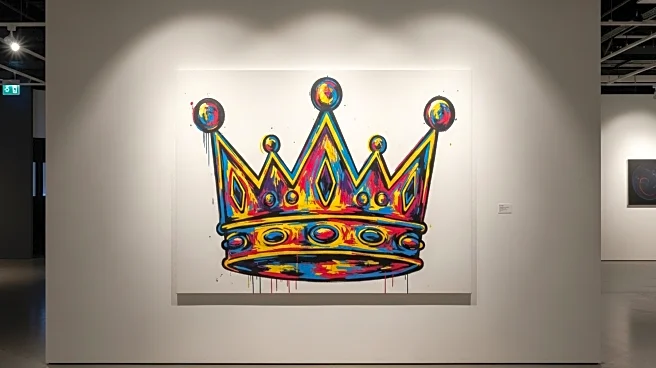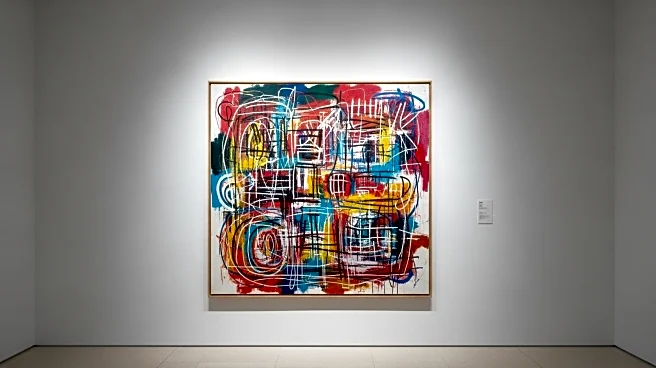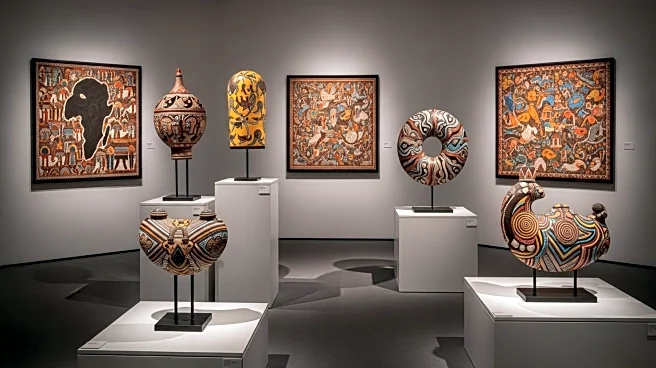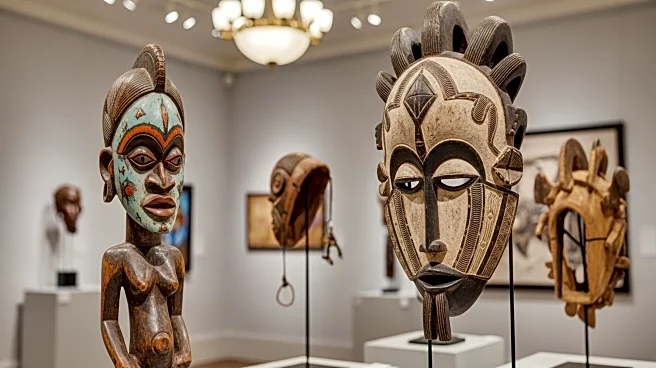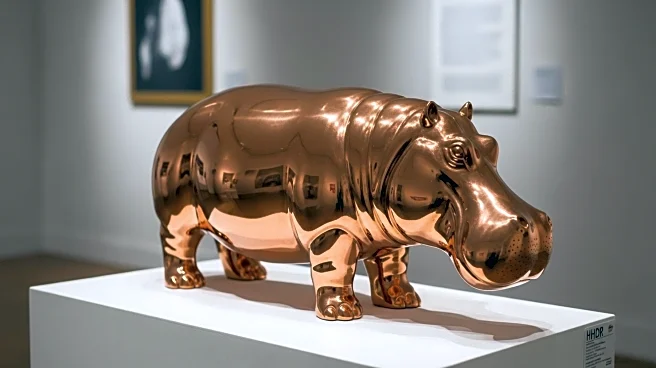What's Happening?
An early painting by Jean-Michel Basquiat, titled Crowns (Peso Neto), is set to make its auction debut at Sotheby's Contemporary Evening Sale in November. The artwork, created in 1981, is expected to fetch between $35 million and $45 million, marking the highest estimate for any Basquiat piece from that period. The painting captures Basquiat's transition from street art to gallery exhibitions, showcasing his energetic line and iconic motifs such as crowns and black faces. The piece has been held in private collections for decades and has appeared in significant exhibitions, including Basquiat's first solo show in New York and retrospectives at the Whitney Museum of American Art and Fondation Louis Vuitton.
Why It's Important?
The auction of Crowns (Peso Neto) underscores the enduring influence and market demand for Basquiat's work. As one of the most celebrated artists of the 20th century, Basquiat's pieces continue to command high prices, reflecting his impact on contemporary art and culture. The sale is significant for collectors and investors, as Basquiat's works are considered valuable assets in the art market. The painting's debut at auction highlights the global reach of Basquiat's market, attracting interest from collectors worldwide. This event may influence future valuations of Basquiat's work and set a precedent for other artists from the same era.
What's Next?
Crowns (Peso Neto) will be exhibited at Sotheby's London and Paris before its auction in New York. The painting's sale could potentially set a new benchmark for Basquiat's early works, influencing future auctions and private sales. Collectors and art enthusiasts will closely watch the auction results, which may impact the broader art market and Basquiat's legacy. Sotheby's confidence in the painting's prospects suggests strong interest and competition among bidders, potentially leading to a record-breaking sale.
Beyond the Headlines
The auction of Crowns (Peso Neto) highlights the cultural and historical significance of Basquiat's work, which often addresses themes of identity, race, and commerce. The painting's motifs reflect Basquiat's exploration of these issues, offering insight into his artistic vision and societal commentary. As Basquiat's works continue to be celebrated and studied, they contribute to ongoing discussions about representation and diversity in the art world.


